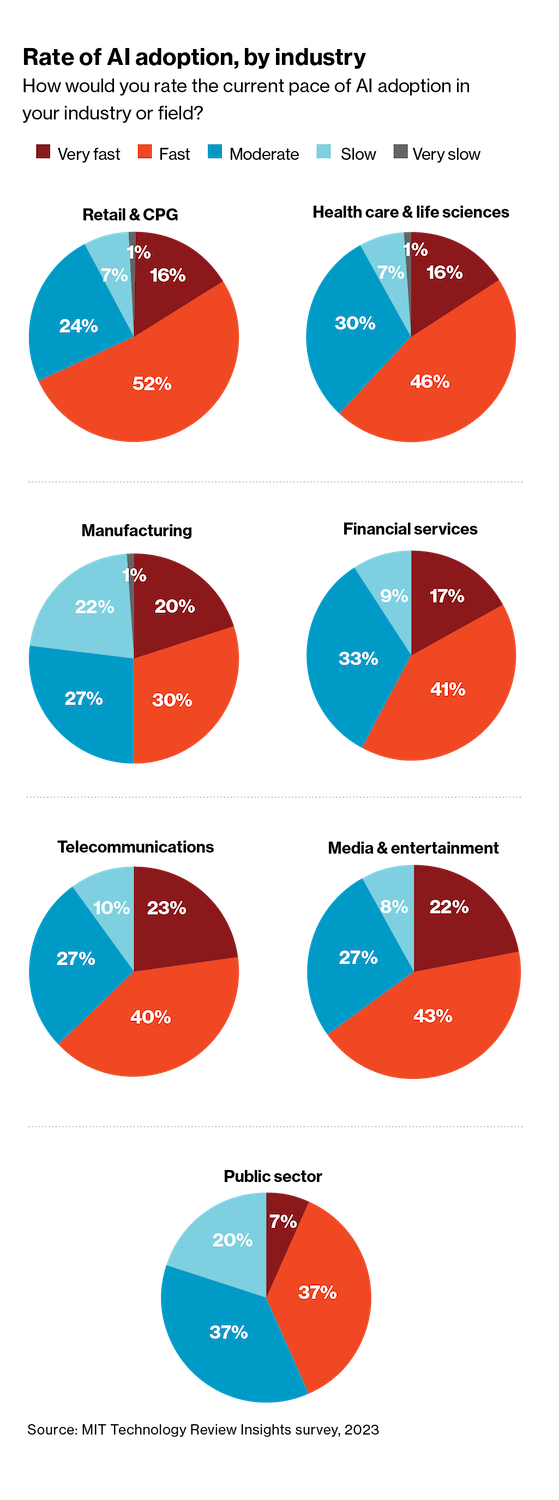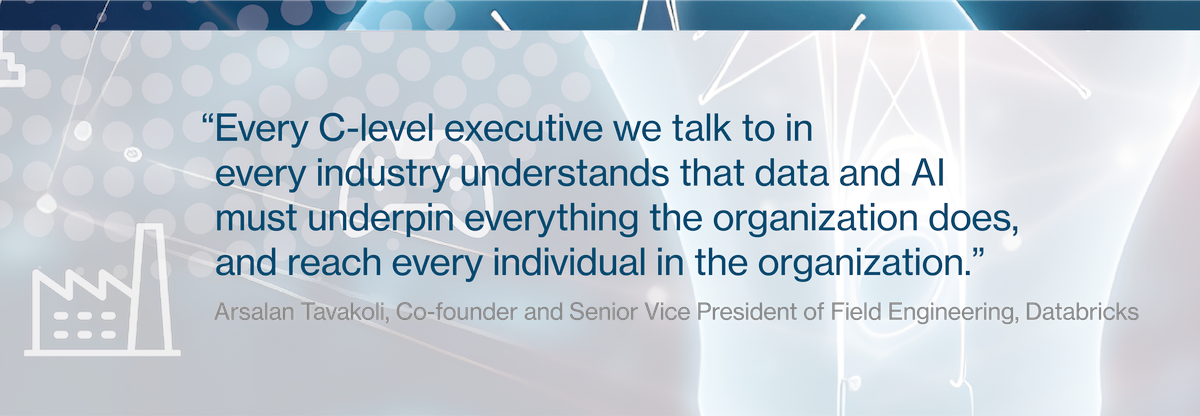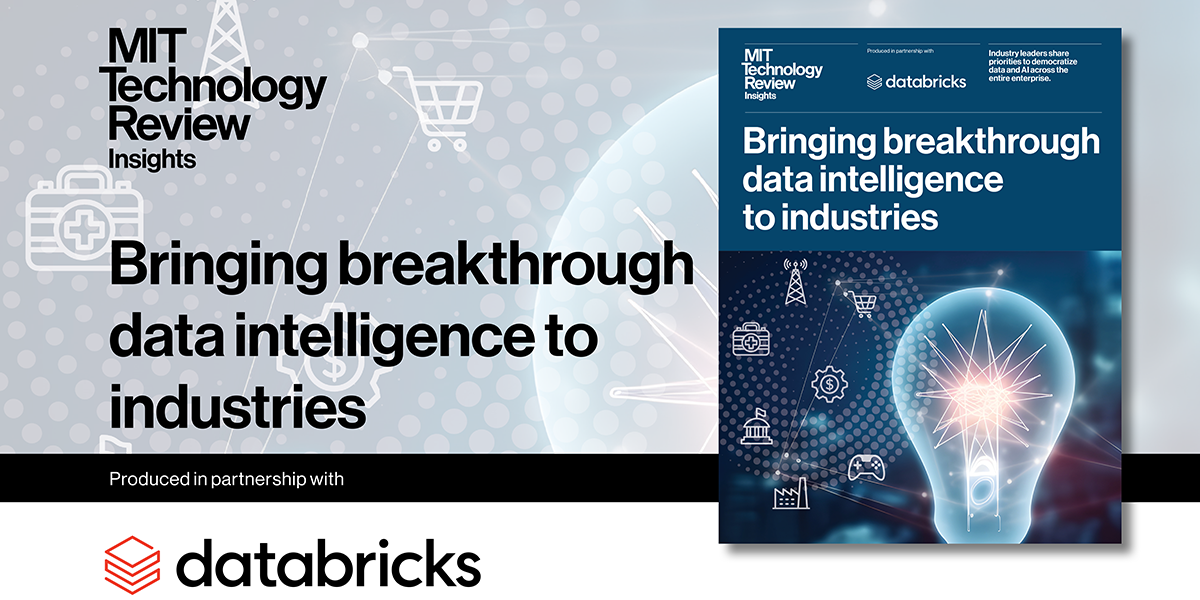As organizations recognize the transformational opportunity presented by generative AI, they must consider how to deploy that technology across the enterprise in the context of their unique industry challenges, priorities, data types, applications, ecosystem partners, and governance requirements. Financial institutions, for example, need to ensure that data and AI governance has the built-in intelligence to fully align with strict compliance and regulatory requirements. Media and entertainment (M&E) companies seek to build AI models to drive deeper product personalization. And manufacturers want to use AI to make their internet of things (IoT) data insights readily accessible to everyone from the data scientist to the shop floor worker.
In any of these scenarios, the starting point is access to all relevant data—of any type, from any source, in real time—governed comprehensively and shared across an industry ecosystem. When organizations can achieve this with the right data and AI foundation, they have the beginnings of data intelligence: the ability to understand their data and break free from data silos that would block the most valuable AI outcomes.
But true data intelligence is about more than establishing the right data foundation. Organizations are also wrestling with how to overcome dependence on highly technical staff and create frameworks for data privacy and organizational control when using generative AI. Specifically, they are looking to enable all employees to use natural language to glean actionable insight from the company’s own data; to leverage that data at scale to train, build, deploy, and tune their own secure large language models (LLMs); and to infuse intelligence about the company’s data into every business process.

In this next frontier of data intelligence, organizations will maximize value by democratizing AI while differentiating through their people, processes, and technology within their industry context. Based on a global, cross-industry survey of 600 technology leaders as well as in-depth interviews with technology leaders, this report explores the foundations being built and leveraged across industries to democratize data and AI. Following are its key findings:
• Real-time access to data, streaming, and analytics are priorities in every industry. Because of the power of data-driven decision-making and its potential for game-changing innovation, CIOs require seamless access to all of their data and the ability to glean insights from it in real time. Seventy-two percent of survey respondents say the ability to stream data in real time for analysis and action is “very important” to their overall technology goals, while another 20% believe it is “somewhat important”—whether that means enabling real-time recommendations in retail or identifying a next best action in a critical health-care triage situation.
• All industries aim to unify their data and AI governance models. Aspirations for a single approach to governance of data and AI assets are strong: 60% of survey respondents say a single approach to built-in governance for data and AI is “very important,” and an additional 38% say it is “somewhat important,” suggesting that many organizations struggle with a fragmented or siloed data architecture. Every industry will have to achieve this unified governance in the context of its own unique systems of record, data pipelines, and requirements for security and compliance.
• Industry data ecosystems and sharing across platforms will provide a new foundation for AI-led growth. In every industry, technology leaders see promise in technology-agnostic data sharing across an industry ecosystem, in support of AI models and core operations that will drive more accurate, relevant, and profitable outcomes. Technology teams at insurers and retailers, for example, aim to ingest partner data to support real-time pricing and product offer decisions in online marketplaces, while manufacturers see data sharing as an important capability for continuous supply chain optimization. Sixty-four percent of survey respondents say the ability to share live data across platforms is “very important,” while an additional 31% say it is “somewhat important.” Furthermore, 84% believe a managed central marketplace for data sets, machine learning models, and notebooks is very or somewhat important.
• Preserving data and AI flexibility across clouds resonates with all verticals. Sixty-three percent of respondents across verticals believe that the ability to leverage multiple cloud providers is at least somewhat important, while 70% feel the same about open-source standards and technology. This is consistent with the finding that 56% of respondents see a single system to manage structured and unstructured data across business intelligence and AI as “very important,” while an additional 40% see this as “somewhat important.” Executives are prioritizing access to all of the organization’s data, of any type and from any source, securely and without compromise.
• Industry-specific requirements will drive the prioritization and pace by which generative AI use cases are adopted. Supply chain optimization is the highest-value generative AI use case for survey respondents in manufacturing, while it is real-time data analysis and insights for the public sector, personalization and customer experience for M&E, and quality control for telecommunications. Generative AI adoption will not be one-size-fits-all; each industry is taking its own strategy and approach. But in every case, value creation will depend on access to data and AI permeating the enterprise’s ecosystem and AI being embedded into its products and services.

Maximizing value and scaling the impact of AI across people, processes, and technology is a common goal across industries. But industry differences merit close attention for their implications on how intelligence is infused into the data and AI platforms. Whether it be for the retail associate driving omnichannel sales, the health-care practitioner pursuing real-world evidence, the actuary analyzing risk and uncertainty, the factory worker diagnosing equipment, or the telecom field agent assessing network health, the language and scenarios AI will support vary significantly when democratized to the front lines of every industry.
This content was produced by Insights, the custom content arm of MIT Technology Review. It was not written by MIT Technology Review’s editorial staff.
Article Source link and Credit




